Crunchy Query: Can Cats Eat Green Peppers? A Vet-Reviewed Safety Analysis
- 16 Apr 2025 10:48
Cats, with their inherent curiosity and playful nature, often investigate the human foods that cross their path. The crisp texture and bright color of a green bell pepper, perhaps being chopped for a salad or stir-fry, might capture your feline friend's attention, leading you to wonder: can cats eat green peppers? We know peppers are vegetables, and cats are carnivores, but is a small nibble safe, or could it cause harm?
The answer requires careful consideration of the specific plant part and the cat's unique physiology. While the flesh of green bell peppers is generally considered non-toxic to cats, it's not a recommended food source due to limited nutritional value and potential digestive issues. Furthermore, other parts of the pepper plant *are* toxic. This comprehensive guide, adhering to E-E-A-T standards (Experience, Expertise, Authoritativeness, Trustworthiness) and reviewed for veterinary accuracy, will explore the safety profile of green peppers for cats, differentiate between the fruit and the plant, detail potential risks, discuss minimal benefits, and provide clear guidance for concerned cat owners.
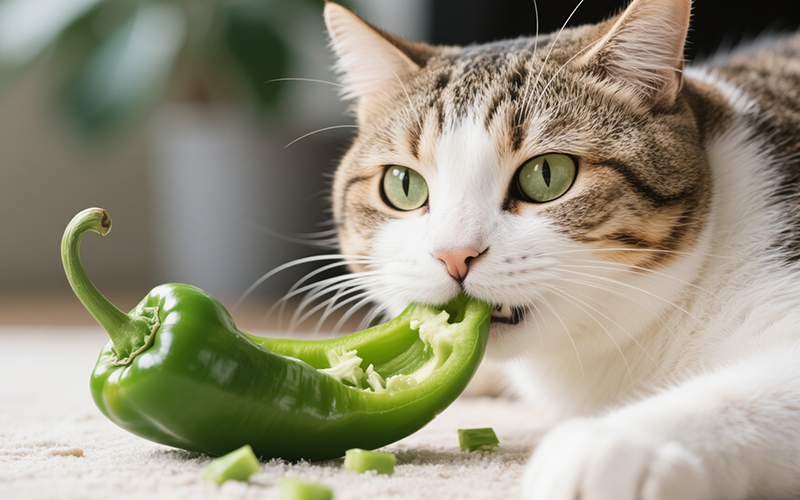
What Are Green Peppers? Understanding the *Capsicum* Fruit
Green bell peppers (*Capsicum annuum*) are, botanically speaking, fruits, although used culinarily as vegetables. They are unripe versions of bell peppers that would eventually turn red, yellow, or orange if left to mature. Key characteristics include:
Member of the Nightshade Family (*Solanaceae*): This is an important point, as many plants in this family contain potentially toxic alkaloids (like solanine). Other members include tomatoes, potatoes, and eggplants.
Lack of Capsaicin: Unlike hot peppers (jalapenos, habaneros), bell peppers contain negligible to no capsaicin, the compound responsible for spiciness and irritation. This means green bell peppers are not "hot."
Nutritional Profile (Human): Good source of Vitamin C, Vitamin K, some B vitamins, and fiber. Contain antioxidants.
The plant itself (leaves, stems, flowers) contains higher concentrations of potentially problematic alkaloids than the ripe fruit flesh.
Feline Biology vs. Vegetables: The Obligate Carnivore Reality
Before assessing green peppers, it's crucial to remember the foundation of cat nutrition. Cats are **obligate carnivores**. Their bodies are specifically adapted to:
Thrive on High Animal Protein: Essential for energy, muscle maintenance, and vital bodily functions. Plant proteins are incomplete for their needs.
Utilize Animal Fats: A primary energy source providing essential fatty acids like arachidonic acid.
Require Specific Nutrients from Meat: Taurine, pre-formed Vitamin A (retinol), certain B vitamins must come from animal tissues. Cats cannot efficiently convert beta-carotene (found in peppers) into usable Vitamin A.
Poorly Digest Carbohydrates & Fiber: Their short digestive tract and lack of key enzymes (like efficient amylase) make digesting plant matter, starches, and high amounts of fiber difficult.
This biological blueprint means vegetables like green peppers offer little nutritional value relevant to a cat's core requirements and can potentially cause digestive issues.
The Direct Answer: Can Cats Eat Green Pepper Flesh? (Fruit vs. Plant Parts)
Let's address the core question directly, distinguishing between the parts of the plant:
Green Pepper Flesh (The Part Humans Eat):** Generally considered **non-toxic** to cats in **small quantities**. According to resources like the ASPCA, bell peppers (*Capsicum annuum*) are not listed as poisonous to cats. A tiny piece of the green flesh is unlikely to cause systemic poisoning.
Green Pepper Plant (Leaves, Stems, Flowers):** These parts **ARE considered potentially toxic** to cats. As members of the nightshade family, they contain alkaloids like **solanine** (similar to tomato and potato plants). Ingesting these plant parts can cause adverse effects.
Seeds and Core:** While less likely to contain high alkaloid levels than leaves/stems, they are still fibrous, difficult to digest, and offer no benefit. Best avoided.
Therefore, while a tiny nibble of the bell pepper *fruit flesh* might not be cause for immediate panic regarding toxicity, it's **still not recommended** as a treat due to other factors, and the **plant itself must be kept away from cats.**
Potential (Minimal) Benefits of Green Pepper Flesh for Cats?
Does green pepper offer any advantages for a cat?
Hydration (Minor):** Green peppers have high water content, offering a minuscule contribution to fluid intake if eaten. Far less effective than providing fresh water or wet food.
Fiber (Double-Edged Sword):** Contains fiber, which *might* theoretically aid digestion in trace amounts, but is more likely to cause digestive upset due to its indigestibility for cats. Safer fiber sources exist if needed (e.g., plain canned pumpkin in appropriate doses).
Vitamins?:** Contains Vitamin C (cats synthesize their own) and beta-carotene (cats cannot efficiently convert to Vitamin A). So, vitamin content is largely irrelevant for feline needs.
Low Calorie:** A tiny piece adds negligible calories, making it seem like a harmless treat in that regard, but the lack of benefit and potential for GI upset remain.
Overall, the nutritional benefits of green bell pepper flesh for an obligate carnivore are essentially zero.
Risks and Concerns: Why Green Peppers Aren't Ideal Feline Snacks
Despite the flesh being non-toxic, several reasons make green peppers unsuitable:
1. Gastrointestinal Upset
This is the most likely issue from eating the pepper flesh.
Indigestible Fiber:** The cellulose and plant fibers are difficult for a cat's digestive system to break down.
Potential Irritation:** Plant matter can physically irritate the stomach and intestinal lining.
Symptoms:** Ingesting green pepper can lead to **vomiting, diarrhea, gas, bloating**, and abdominal discomfort, even from relatively small amounts.
2. Choking Hazard
Firm Texture:** Raw green pepper pieces can be quite firm and crisp.
Risk:** If a cat bites off a chunk without chewing properly, it could potentially become lodged in the throat, posing a choking risk. This risk increases if large pieces are offered.
3. Lack of Nutritional Value & Dietary Displacement
Empty Calories:** Provides calories mainly from carbohydrates with no essential feline nutrients.
Displacement:** Eating peppers can fill a cat up, reducing their appetite for their nutritionally complete, balanced cat food, potentially leading to nutritional gaps if it becomes a habit.
4. Pesticide Residue
Surface Contamination:** Conventionally grown peppers may have pesticide residues on the skin.
Risk:** Ingesting these chemicals can be harmful to cats.
Mitigation:** Thoroughly washing the pepper before offering even a tiny piece is essential. Organic reduces, but may not eliminate, this risk.
5. **Toxicity of Plant Parts (Leaves, Stems)** - **CRITICAL RISK**
This cannot be overstated. If you grow pepper plants or bring them indoors:
Solanine/Alkaloids:** Leaves and stems contain higher levels of potentially toxic alkaloids common to nightshade plants.
Symptoms of Plant Ingestion:** Can include excessive drooling, loss of appetite, vomiting, diarrhea, lethargy, weakness, confusion, dilated pupils, slowed heart rate (in severe cases).
Prevention:** Keep pepper plants well out of reach of cats.
6. Confusion with Hot Peppers
Capsaicin Danger:** While green *bell* peppers lack capsaicin, *hot* peppers (jalapenos, chili peppers, etc.) contain it. Capsaicin is a severe irritant to cats, causing intense oral pain, drooling, vomiting, diarrhea, and potentially eye/skin irritation on contact. **Never feed hot peppers to cats.** Ensure you are only dealing with mild bell peppers if considering offering a tiny piece (though still not recommended).
Raw vs. Cooked Green Peppers for Cats
Raw Green Pepper:** Firm texture poses a higher choking risk. Fiber is less broken down, potentially causing more GI upset. Pesticide residue on skin is a concern.
Cooked Green Pepper (Plain):** Cooking softens the pepper, reducing the choking risk and making fiber slightly more digestible (though still not ideal). However, cooking must be completely **PLAIN** - no oil, salt, butter, garlic, onions, or other seasonings. Many dishes containing cooked peppers (fajitas, stir-fries) include toxic ingredients like onion/garlic.
While plain cooked pepper flesh is marginally safer than raw due to texture, it remains nutritionally inappropriate and still carries a risk of GI upset.
"My Cat Ate Green Pepper!" - What to Do
Your response depends on what part was eaten and how much:
If Your Cat Ate Green Pepper PLANT (Leaves, Stems):
Remove Access:** Prevent further ingestion immediately.
Identify Plant Part & Amount:** Confirm it was the plant part, estimate quantity.
Contact Vet or Pet Poison Helpline IMMEDIATELY:** This is crucial due to potential solanine toxicity. Provide details.
Do NOT Induce Vomiting:** Unless instructed by vet.
Monitor Closely:** Watch for drooling, vomiting, diarrhea, lethargy, dilated pupils. Seek immediate care if symptoms appear.
If Your Cat Ate Green Pepper FRUIT FLESH:
Assess Amount & Preparation:** Was it raw or cooked? Plain or seasoned? Tiny piece or large chunk?
Remove Access:** Secure remaining pepper.
Plain, Tiny Piece (Raw or Cooked):** Monitor for 24-48 hours for vomiting, diarrhea, gas, or choking signs. Ensure access to fresh water. Call vet if symptoms develop or you're concerned.
Large Piece / Choking Concern:** Call vet immediately regarding choking/obstruction risk.
Seasoned Pepper / Part of Human Dish:** Call vet immediately due to high risk of toxic ingredients (onion, garlic, high salt/fat).
Safer Crunchy & Green Alternatives for Cats
If your cat enjoys a crunch or seeks greens, offer these instead:
Cat Grass:** Grow oat, wheat, or barley grass indoors for safe nibbling.
Certain Cat Treats:** Some commercial treats have a crunchy texture. Choose high-quality, meat-based options.
Freeze-Dried Meat Treats:** Offer a satisfying crunch for some cats.
Plain Cooked Meat:** Small, well-cooked pieces (not crunchy, but safe).
Safe Chew Toys:** Provide appropriate toys to satisfy chewing urges.
Small Amount of Plain Cooked Pumpkin or Green Beans:** While still not ideal treats, tiny amounts of plain cooked pumpkin or green beans are generally considered safer fiber sources than bell peppers if offering a vegetable treat (vet consultation recommended).
Expert Veterinary Opinion on Green Peppers for Cats
Veterinarians generally advise:
Green bell pepper *flesh* is **non-toxic** but **not recommended** due to lack of nutritional value and high potential for **gastrointestinal upset**.
The **pepper plant (leaves, stems) is potentially toxic** (solanine) and should be kept away from cats.
**Choking** is a risk with firm, raw pieces.
**Pesticide contamination** is a concern with non-organic peppers.
It offers **no health benefits** over a species-appropriate diet.
Prioritize safe, meat-based treats or cat grass for enrichment.
Consult a vet if plant parts are ingested or if significant GI upset occurs after eating the flesh.
Summary Table: Cats and Green Pepper Safety
| Aspect | Safety Information & Recommendations |
| Can Cats Eat Green Pepper Flesh? (Bell Pepper) | Non-toxic in tiny amounts, but **NOT recommended.** Nutritionally poor, risks GI upset, choking hazard (raw). |
| Green Pepper Plant Parts (Leaves, Stems, Flowers) | **POTENTIALLY TOXIC.** Contain nightshade alkaloids (solanine). Keep plants away from cats. |
| Nutritional Value for Cats | Negligible. Poorly digestible carbs/fiber, no essential feline nutrients (e.g., usable Vit A). |
| Primary Risks (Flesh) | **Gastrointestinal Upset** (Vomiting, Diarrhea, Gas), Choking Hazard (Raw). |
| Other Risks | Pesticide Residue, Lack of Nutrition, Plant Part Toxicity. |
| Cooked vs. Raw Pepper Flesh | Cooked (plain) reduces choking risk but still unsuitable nutritionally and can cause GI upset. |
| Hot Peppers vs. Bell Peppers | Hot peppers contain capsaicin = severe irritant/painful. Bell peppers do not. NEVER feed hot peppers. |
| Action if Eaten | Plant Parts -> **IMMEDIATE VET/POISON CONTROL.** Flesh -> Monitor; call vet if symptoms, large piece, choking signs, or seasoned. |
| Recommendation | **Avoid feeding green peppers.** Keep plants inaccessible. Offer safe alternatives like cat grass or meat treats. |
Need Quick Info on Pet Safety & Health? PettureX Can Help!
Navigating the world of what's safe for your cat to nibble on, like understanding the difference between green pepper flesh and the toxic plant parts, is vital for their safety. If your cat ingests something potentially harmful or shows sudden symptoms, having access to quick information can be crucial while you contact your veterinarian – your essential resource for diagnosis and treatment.
The PettureX App offers innovative features for proactive pet parents:
24/7 AI Vet Consultation: Get immediate AI-powered answers to urgent questions ("Are green pepper plants poisonous to cats?") or guidance on symptoms like vomiting or lethargy after potential plant ingestion.
Image Recognition Technology: Useful for breed identification or getting preliminary insights into visible health concerns.
AI-Powered Symptom Checker: Describe your cat's symptoms for an AI analysis of potential causes, including plant toxicity or GI upset, aiding communication with your vet.
Comprehensive Pet Health Database: Quickly access information on toxic and non-toxic plants, common household hazards, feline nutrition, and preventive care.
PettureX serves as a valuable digital assistant, providing convenient AI-driven support and information, designed to complement the essential, personalized care from your veterinarian.
Conclusion: Green Peppers - Best Left Off the Feline Menu
In conclusion, while the flesh of green bell peppers is generally considered non-toxic to cats, the answer to "can cats eat green peppers?" is that it's **not recommended**. The fruit offers negligible nutritional value for obligate carnivores and poses risks of gastrointestinal upset and potential choking (if raw).
Critically, the **leaves, stems, and flowers of the green pepper plant *are* potentially toxic** due to nightshade alkaloids (solanine) and must be kept strictly away from cats. Furthermore, hot peppers containing capsaicin are definite hazards.
Prioritize your cat's health and safety by sticking to a complete and balanced commercial cat food diet and offering only safe, species-appropriate treats like small pieces of cooked meat or designated cat treats. If your cat enjoys chewing greens, provide safe cat grass instead of risking access to potentially harmful or contaminated vegetables.
Related

Frankly Dangerous: Can Cats Eat Hot Dogs? Vet Explains the Serious Risks
- 16 Apr 2025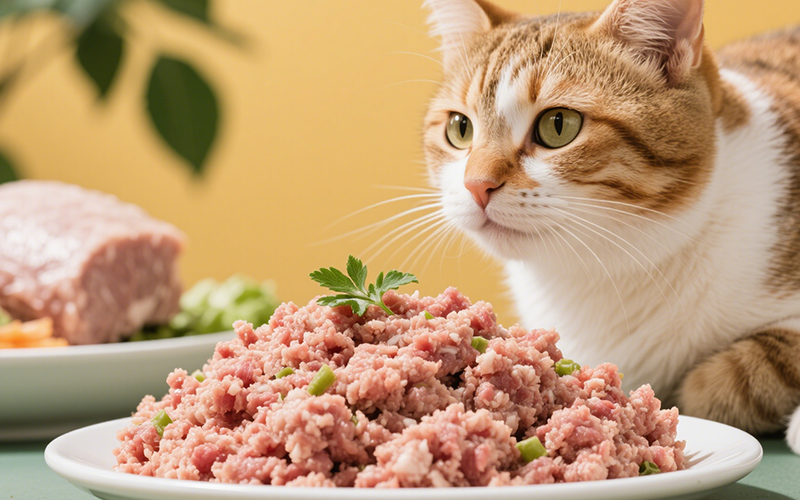
A Purrfect Protein? Can Cats Eat Ground Turkey Safely? (Vet-Reviewed Guide)
- 16 Apr 2025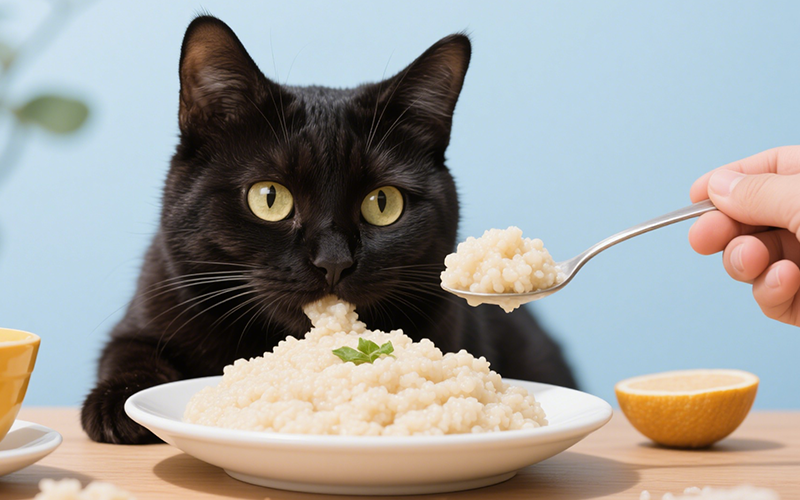
Gritty Situation: Can Cats Eat Grits Safely? Vet Explains the Risks
- 16 Apr 2025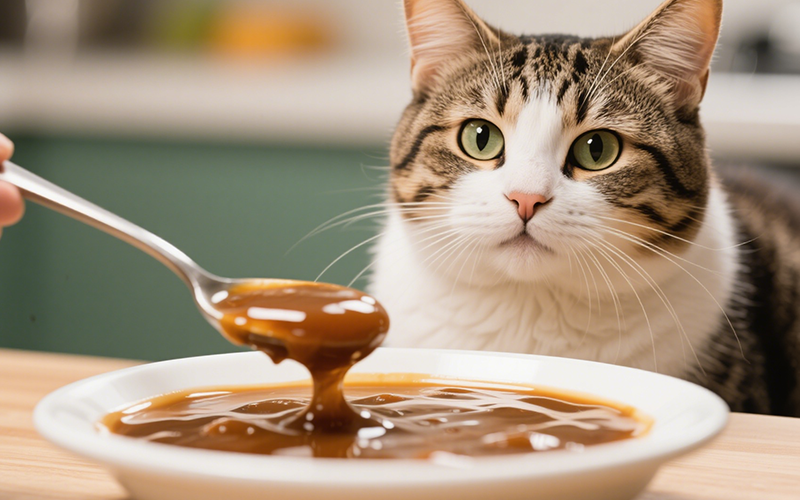
Gravy Danger Zone: Can Cats Eat Gravy Safely? (Vet-Reviewed Warning)
- 16 Apr 2025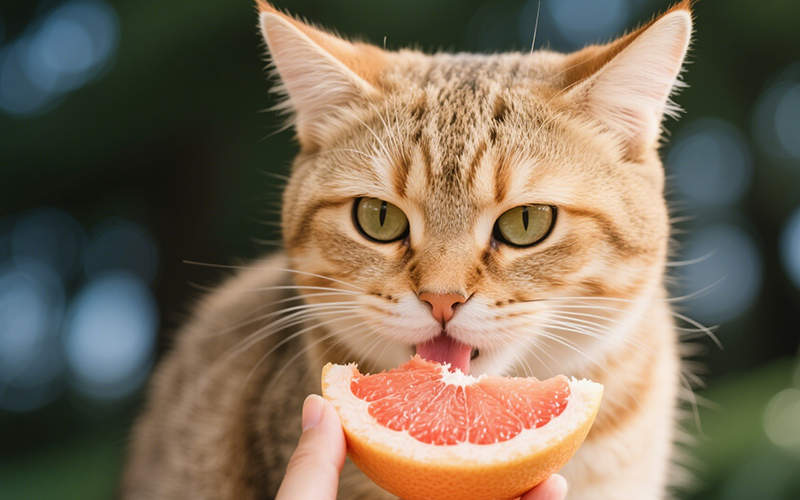
Toxic Temptation: Can Cats Eat Grapefruit? Vet Explains the Dangers
- 16 Apr 2025
Emergency Meal or Major Mistake? Can Cats Eat Dog Food For A Couple Days? (Vet Guide)
- 16 Apr 2025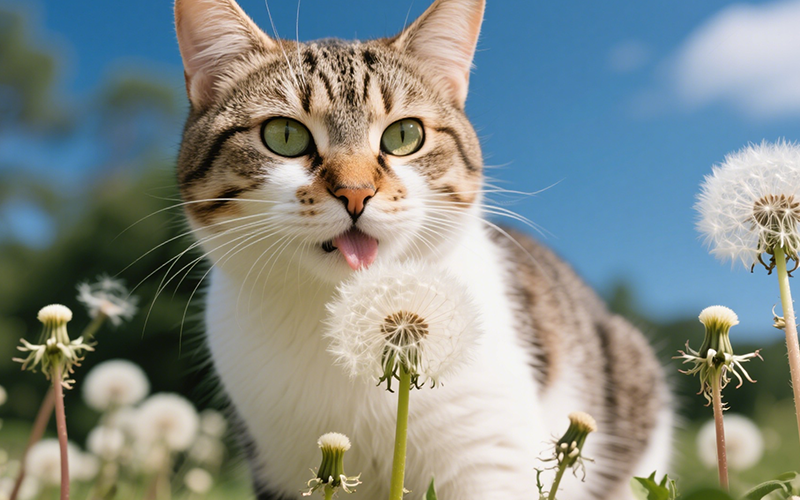
Dandelions & Felines: Can Cats Eat These Common Weeds Safely? Vet Explains
- 16 Apr 2025
Flaky Danger: Can Cats Eat Croissants Safely? Vet Explains the Buttery Risks
- 16 Apr 2025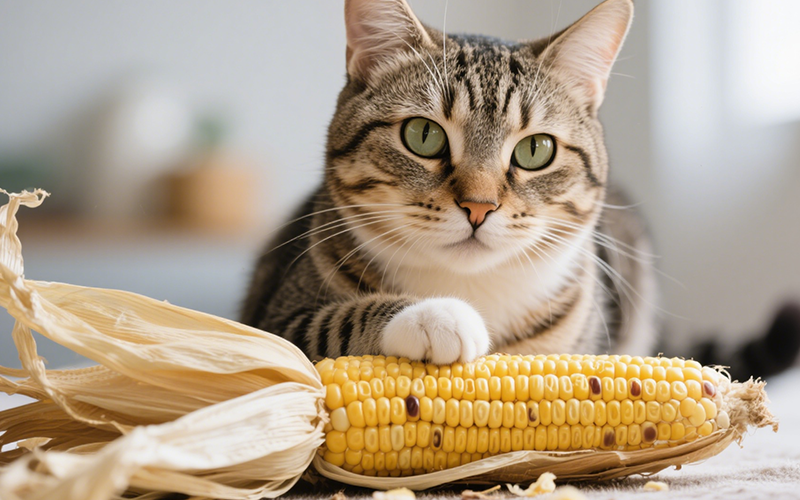
Hazard Alert: Can Cats Eat Corn Husks? Vet Explains Dangers of This Fibrous Material
- 16 Apr 2025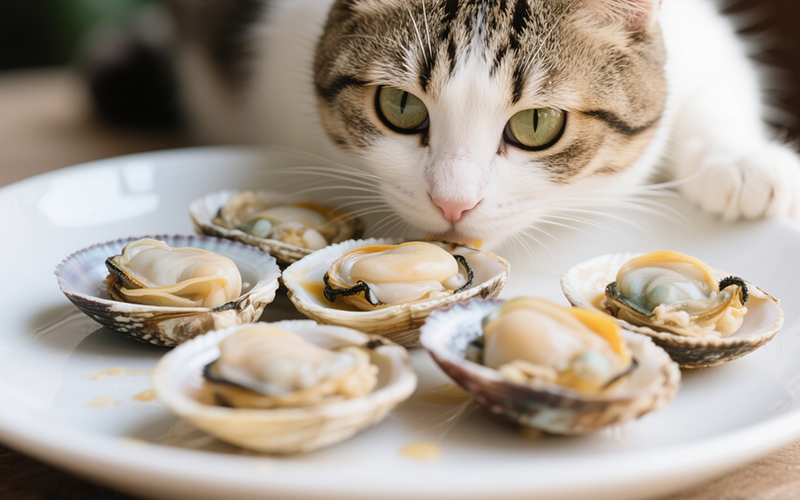
Seafood Surprise: Can Cats Eat Clams Safely? (Vet-Reviewed Risks & Guide)
- 15 Apr 2025
